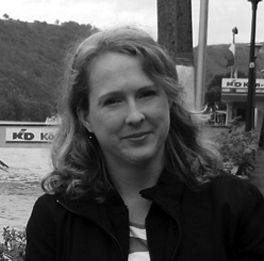
Marine Ecology: Modelling a Theory of the Redfield Ratio
15 Oct - 15 Dec 2018
Biography
Professor Ann Pearson is Professor of Environmental Sciences in the Department of Earth and Planetary Sciences at Harvard University. Her research focuses on applications of analytical chemistry, isotope geochemistry, and molecular biology to biochemical oceanography and Earth history. Recent work has focused on the carbon and nitrogen cycles, with emphasis on how biological communities respond to changing environmental conditions. Her work advances the analytical chemistry techniques used to interpret chemical signatures – specifically lipid biomarkers and their isotopic compositions – left by ancient sea-dwelling microorganisms, and also looks at theoretical frameworks for interpreting these signatures.
Professor Pearson received her Ph.D. in Chemical Oceanography from the Massachusetts Institute of Technology and Woods Hole Oceanographic Institution Joint Program in Oceanography in 2000 and joined the Harvard University faculty in 2001. She received a Fellowship for Science and Engineering from the David and Lucille Packard Foundation in 2004, a Radcliffe Institute Fellowship in 2009, the Paul Gast Lectureship of the Geochemical Society in 2015, and is an Investigator of The Gordon and Betty Moore Foundation’s Marine Microbiology Initiative.
During her stay Professor Pearson will be hosted by Dr. Fanny Monteiro (Geographical Sciences) and Professor Richard Pancost (Chemistry).
Project Summary
The Redfield Ratio (RR) is the observation that the elemental ratio of nitrogen to phosphorous in marine
organisms is similar to the ratio of nitrogen and phosphorous nutrients dissolved in seawater. Understanding what controls the N:P ratio in the ocean is a key question in the oceanographic community that has been investigated for more than 50 years (Redfield, 1963 on “The influence of organisms on seawater composition”), yet the fundamental regulation of N:P is still not well understood. This represents a critical gap in knowledge, as the RR is fundamentally important to the regulation of nutrients in the ocean. These nutrients control the base of the food chain as well as how much atmospheric CO2 is taken up by the ocean under a changing climate.
The goal of this project is to develop a quantitative feedback model to establish the biological basis of the oceanic RR. The model will describe the coupling between bacterial and algal processes
that control the size of the N inventory relative to the availability of P, thereby exerting a self-regulating control on the RR. The approach will be implemented in the Earth system model known as GENIE, using a framework known as ecosystem resource competition theory. The results will be used to predict marine nutrient states, to re-examine oceanographic records of algal species succession, and to predict changes in the ocean nutrient state under conditions of future climate change. The implications of the project include the possibility to more accurately forecast future changes at the base of the marine ecosystem, impacting marine food webs and fisheries.
Events